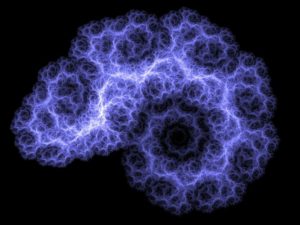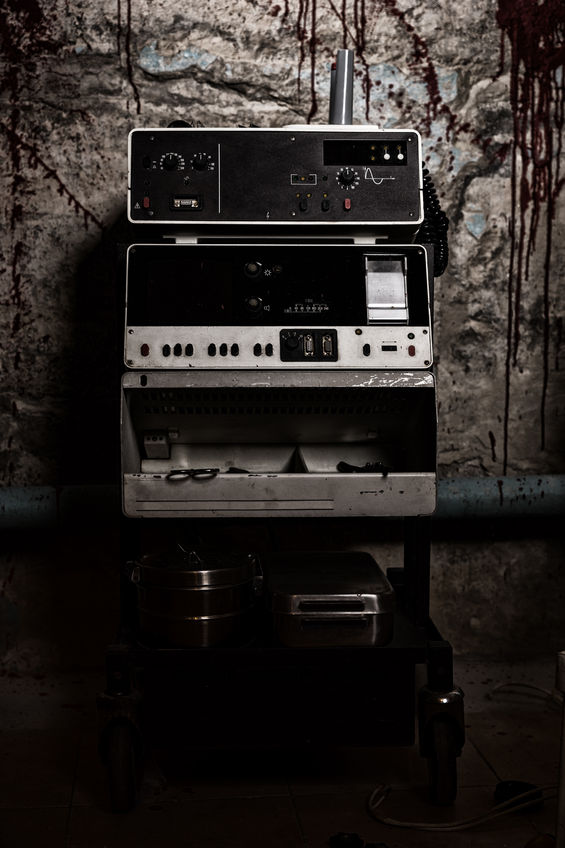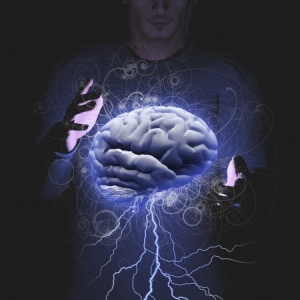Throwing Down the Gauntlet for ECT, Part 2
Electroconvulsive therapy (ECT) has been used as a treatment for mental health disorders for almost ninety years. It is acknowledged as a controversial psychiatric treatment by advocates and opponents alike. Centers that promote its use say it has become safer and more tolerable and claim it to be one of the most effective treatments in the history of psychiatry. Others see it as a cruel and barbaric therapy with risk factors that include permanent memory loss and even a small danger of death. A review by John Read, Irving Kirsch and Laura McGrath, “Electroconvulsive Therapy for Depression,” may have begun to shift that debate towards concluding the known risks outweigh the supposed benefits.
Over the past thirty years there has been a global movement towards evidence-based medicine, requiring the systematic collection and analysis of data about the effectiveness of treatments. According to John Read and Richard Bentall in “The effectiveness of electroconvulsive therapy,” this approach assumes that clinical decision-making should be informed by a hierarchy of information in which data from placebo-controlled randomized trials stands at the apex. The randomized controlled trial (RCT) is where participants are randomly assigned to the treatment group or to a control group, in order to help ensure there is no bias when assigning participants to the two conditions. With the realization that the research results were biased when the researcher or participant was aware of the participant’s presence in the treatment or the control group, the gold standard methodology became the double-blind RCT, where neither researcher nor participant was aware of which group participants were in.
The ideal control treatment in a double-blind RCT is a placebo—something that looks and feels like the treatment but is inert. In other words, it does not have the experimental influence the treatment group has. For ECT, this entails a simulation or “sham,” where the participant received the general anesthetic, but not the electricity (SECT). And in the entire history of ECT use, there have only been eleven such studies.
John Read has done several past reviews of the ECT literature (See the above link for “The effectiveness of electroconvulsive therapy” and “Is Electroconvulsive Therapy for Depression more Effective Than Placebo?”), finding that there is no evidence of a lasting effect. But there have been several metanalyses which have shown the opposite. So, he thought it would be useful to not only look again at the studies, but to also look at the quality of these metanalyses. In a podcast for Mad in America, Read said: “We wanted to try and understand how these metanalyses kept concluding that ECT works, when the studies they were using were such poor quality, in our view, that you really couldn’t reach any conclusions.”
He wanted to assess whether the studies were of good enough quality to merit having been included in the metanalyses. And to also see whether or not the metanalyses had shown any interest in the quality of the studies they reviewed. Read and his coauthors developed a rating scale for assessing the quality of the trials, which included the five basic Cochrane collaboration criteria to evaluate a metanalysis. Tellingly, there has not been a single robust study into whether ECT works since 1985. The size of the placebo ECT/SECT studies was also small, averaging 37 people; the largest size was only 77 individuals. In a review of the Read, Kirsch, McGrath study for the Council for Evidence-Based Psychiatry, John Bentall said it seemed unlikely to him that any safe conclusions could be drawn from studies with such small numbers.
None of the placebo ECT/SECT studies were double blind. Some studies blinded the researcher; some did not. In order to blind the participants, you would have to use only individuals who had never had ECT previously. The reason for this is that if you had previously had ECT, you would know that you always wake up with a headache and confusion for few hours. “So, you know what group you’re in,” making it impossible to properly design a double-blind ECT study, unless you only include participants who have never had ECT before.
There was also a lot of selective reporting in the studies. Read discussed how one study asked the psychiatrist, nurses and patients to rate the effectiveness of the study, but only reported data on the psychiatrists. Another study reported both psychiatrist and patient ratings, where the psychiatrist found ECT to be better than placebo, but the patient did not. “The studies were in an appalling quality, and how any of them got included in serious metanalysis is a wonder.” Additionally, the metanalyses were arbitrary in which of the existing eleven placebo ECT/SECT studies were included. They included between one and seven of the eleven studies.
Read, Kirsch and McGrath concluded the data used in these metanalyses was not good enough to answer the question of whether or not ECT actually worked. They could not say ECT does not work; just that the data does not indicate that it works. “There isn’t any evidence that it does work. But the point is the studies were so poor, that we don’t know.” Added to that is the lack of research into adverse effects, such as brain damage and memory loss. Read said the ECT research is so poor, they don’t know how many people actually get permanent or persistent memory loss. Estimates range from 12.5% to 55%, with studies asking patients reporting the higher percentages. They concluded in the study:
Given the high risk of permanent memory loss and the small mortality risk, this longstanding failure to determine whether or not ECT works means that its use should be immediately suspended until a series of well designed, randomized, placebo-controlled studies have investigated whether there really are any significant benefits against which the proven significant risks can be weighed.
Read said the Royal College of Psychiatrists stated they plan to update its statement on ECT and will do so in light of their review. And the UK’s National Institute for Health and Clinical Excellence (NICE) has said they will consider the implications of the review in the current update of depression guidelines. On the podcast, James Moore asked John Read if the UK would go ahead and make changes in its regulation of ECT, could that have any influence on what occurs in the US? He said he hoped they would consider it and planned to send copies to the FDA and the American Psychiatric Association.
In the Mad in America podcast, Irving Kirsch acknowledged that in the placebo literature, placebo also effects the doctors administering the ECT treatment. “If you change the expectations of the doctors who are administering the treatment, you can increase the placebo effect.” He said the exact mechanism by which this expectation is communicated is unknown. However, different placebos have different effects and the effect increases as you raise the bar on the complexity of the procedure. Capsule placebos are more effective than pills; placebo injections are more effective than either capsules or pills; and placebo surgery is the most effective placebo of all. “The more invasive the procedure, the great the placebo effect.” Nevertheless, he was surprised by the magnitude of placebo effect with ECT.
The stronger the expectation, the stronger the placebo effect. . . You get responses from both the sham and the genuine treatment. And with ECT when you are looking at the long-range effects, the sustained effects, there seems to be not differences at all.
He said particularly with depression, you can anticipate a large placebo effect. One of the characteristics of depression is a sense of hopelessness. When you are then given a new treatment, whether it be a drug or something else, you can have the thought that maybe this will work. “It instills a sense of hope that counters the hopelessness that is a core feature of depression.” His sense is that ECT should be prohibited and gave the following reasons.
First, the negative effects are so strong.
Second, there is no good evidence that ECT has any effect at all, especially in the long-term.
Third there are other means of treatment.
The authors estimated that about 1 million people receive ECT annually; 250,000 in the UK.







